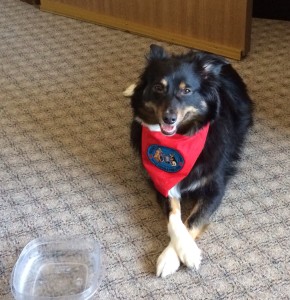Some may think that the use of a therapy dog in session simply involves petting and feeling the comfort of the dog’s presence. This is only a small part of Animal-Assisted Therapy. I wanted to provide an example of how I use Charlie to help children/adolescents with Asperger’s or Autism Spectrum Disorders to develop empathy and perspective-taking. Often, children on the Autism Spectrum may have trouble reading nonverbal cues from others, such as body language, posture, and facial expressions. Therefore, in session, as Charlie interacts with myself and the patient, I will often pause them to ask questions such as: “What is Charlie thinking right now? Why is she looking away? Why did she get up suddenly and move across the room? What might Charlie feel right now and why? Why is she sighing and looking at me?” By using this reflection and psychoeducation of Charlie’s nonverbal responses to various situations in therapy, the children gain insight into how and why children at school may respond to them in certain ways.
For example, when a child was trying to pet Charlie with one finger on her head, almost like a poking motion, I coached him through observing Charlie’s emotional responses (confused, uncomfortable-moving her head away, looking at me for guidance, hesitancy) and we talked about moving more fluidly and gradually when approaching others, and how to use people’s (or dog’s) names to appropriately get their attention first before moving closer. This also opened up room for discussion of how to be mindful of personal space. In addition, the child learned how to provide genuine compassion to another being, with the dog as practice, without judgment. It was amazing to see the release of anxiety in interacting with an animal, and the genuine smile the child had as he became more comfortable interacting with Charlie.
